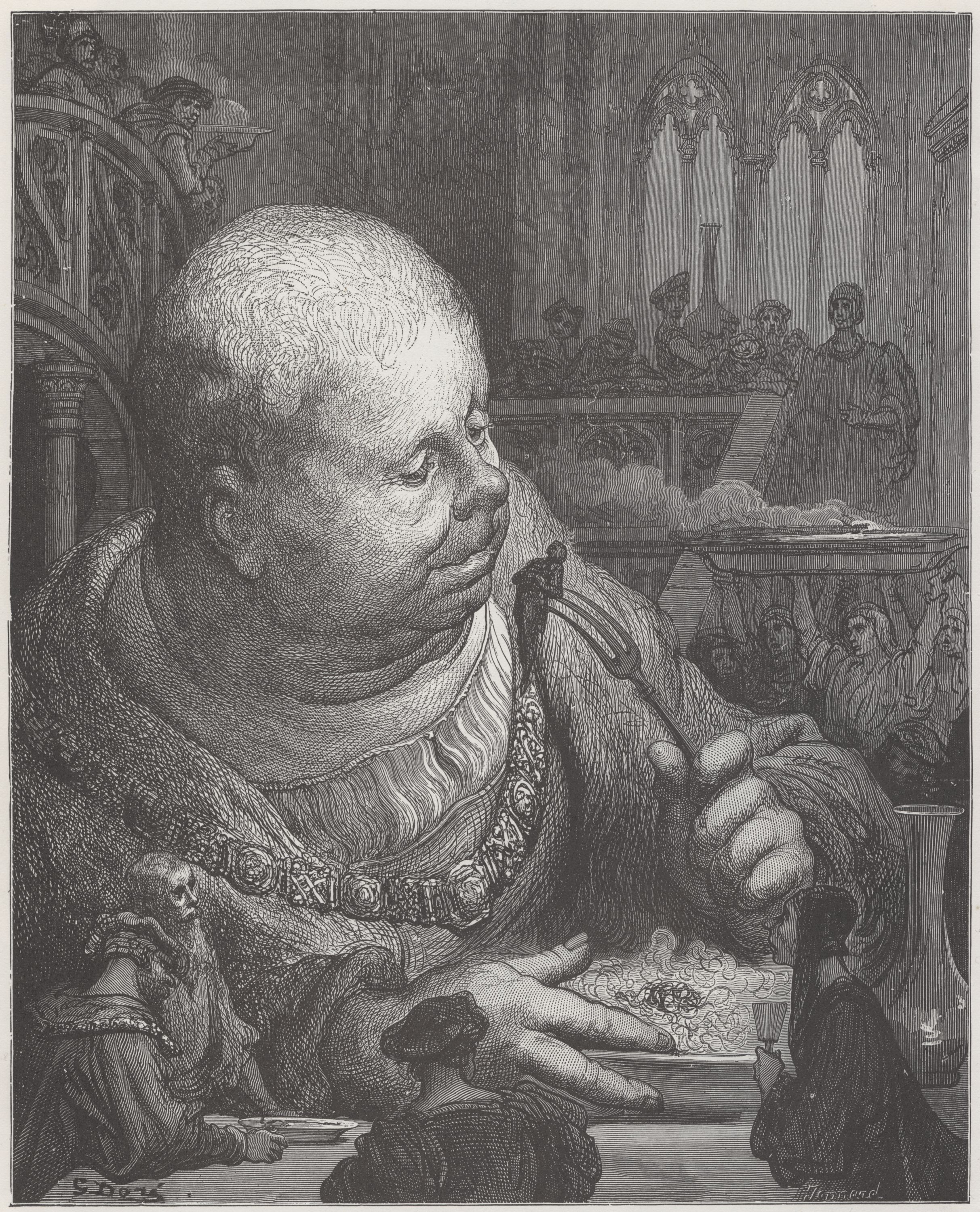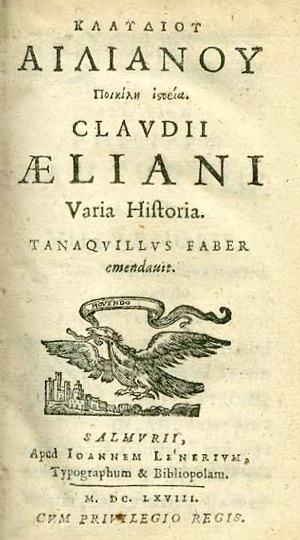|
Tarand (animal)
A tarand, also known as a tarandos, tarandus, parandrus, or parandros, is a legendary reindeer/moose-like creature with chameleon properties. It was first described in Aristotle's Corpus Aristotelicum as Tarandos (Τάρανδος). It was also mentioned in Pliny's History of the Animals (''Tarandus''), Aelian's De Natura Animalium (''Tarandos''), Solinus (''Parandrus'') and Caesar, appearing again in key texts of the medieval period, such as ''The York Mystery Cycle'' (1440) and Francois Rabelais' ''Pantagruel'' (1552). The veracity of the tarand was discussed by Jean Léopold Nicolas Frédéric, Baron Cuvier (1769–1832). Aristotle, Pliny and Aelian write that the animal (Tarandus) was living in Scythia, while Solinus write that the animal that he describes (Parandus) was living in Aethiopia Ancient Aethiopia, ( gr, Αἰθιοπία, Aithiopía; also known as Ethiopia) first appears as a geographical term in classical documents in reference to the upper Nile region of ... [...More Info...] [...Related Items...] OR: [Wikipedia] [Google] [Baidu] |
Parandrus Royal MS12
A tarand, also known as a tarandos, tarandus, parandrus, or parandros, is a legendary reindeer/moose-like creature with chameleon properties. It was first described in Aristotle's Corpus Aristotelicum as Tarandos (Τάρανδος). It was also mentioned in Pliny's History of the Animals (''Tarandus''), Aelian's De Natura Animalium (''Tarandos''), Solinus (''Parandrus'') and Caesar, appearing again in key texts of the medieval period, such as ''The York Mystery Cycle'' (1440) and Francois Rabelais' ''Pantagruel'' (1552). The veracity of the tarand was discussed by Jean Léopold Nicolas Frédéric, Baron Cuvier (1769–1832). Aristotle, Pliny and Aelian write that the animal (Tarandus) was living in Scythia, while Solinus write that the animal that he describes (Parandus) was living in Aethiopia Ancient Aethiopia, ( gr, Αἰθιοπία, Aithiopía; also known as Ethiopia) first appears as a geographical term in classical documents in reference to the upper Nile region of ... [...More Info...] [...Related Items...] OR: [Wikipedia] [Google] [Baidu] |
Medieval
In the history of Europe, the Middle Ages or medieval period lasted approximately from the late 5th to the late 15th centuries, similar to the Post-classical, post-classical period of World history (field), global history. It began with the fall of the Western Roman Empire and transitioned into the Renaissance and the Age of Discovery. The Middle Ages is the middle period of the three traditional divisions of Western history: classical antiquity, the medieval period, and the modern history, modern period. The medieval period is itself subdivided into the Early Middle Ages, Early, High Middle Ages, High, and Late Middle Ages. Population decline, counterurbanisation, the collapse of centralized authority, invasions, and mass migrations of tribes, which had begun in late antiquity, continued into the Early Middle Ages. The large-scale movements of the Migration Period, including various Germanic peoples, formed new kingdoms in what remained of the Western Roman Empire. In the ... [...More Info...] [...Related Items...] OR: [Wikipedia] [Google] [Baidu] |
Parandrus 3244
A tarand, also known as a tarandos, tarandus, parandrus, or parandros, is a legendary reindeer/moose-like creature with chameleon properties. It was first described in Aristotle's Corpus Aristotelicum as Tarandos (Τάρανδος). It was also mentioned in Pliny's History of the Animals (''Tarandus''), Aelian's De Natura Animalium (''Tarandos''), Solinus (''Parandrus'') and Caesar, appearing again in key texts of the medieval period, such as ''The York Mystery Cycle'' (1440) and Francois Rabelais' ''Pantagruel'' (1552). The veracity of the tarand was discussed by Jean Léopold Nicolas Frédéric, Baron Cuvier (1769–1832). Aristotle, Pliny and Aelian write that the animal (Tarandus) was living in Scythia, while Solinus write that the animal that he describes (Parandus) was living in Aethiopia Ancient Aethiopia, ( gr, Αἰθιοπία, Aithiopía; also known as Ethiopia) first appears as a geographical term in classical documents in reference to the upper Nile region of ... [...More Info...] [...Related Items...] OR: [Wikipedia] [Google] [Baidu] |
Geloni
The Gelonians (or Geloni) ( grc, Γελωνοί), also known as Helonians (or Heloni), are mentioned as a nation in northwestern Scythia by Herodotus. Herodotus states that they were originally Hellenes who settled among the Budinoi, and that they are bilingual in Greek and the Scythian language. Their capital was called Gelonos or Helonos, originally a Greek market town. In his account of Scythia, Herodotus writes that the Gelonii were formerly Greeks, having settled away from the coastal emporia among the Budini, where they "use a tongue partly Scythian and partly Greek": :The Budini for their part, being a large and numerous nation, is all mightily blue-eyed and ruddy. And a city among them has been built, a wooden city, and the name of the city is Gelonus. Of its wall then in size each side is of thirty stades and high and all wooden. And their homes are wooden and their shrines. For indeed there is in the very place Greek gods’ shrines adorned in the Greek way with statu ... [...More Info...] [...Related Items...] OR: [Wikipedia] [Google] [Baidu] |
Aethiopia
Ancient Aethiopia, ( gr, Αἰθιοπία, Aithiopía; also known as Ethiopia) first appears as a geographical term in classical documents in reference to the upper Nile region of Sudan, as well as certain areas south of the Sahara desert. Its earliest mention is in the works of Homer: twice in the ''Iliad'', and three times in the ''Odyssey''. The Greek historian Herodotus "specifically" uses the appellation to refer to such parts of sub-Saharan Africa as were then known within the inhabitable world. In classical antiquity, ''Africa'' (or ' Ancient Libya') specifically referred to what is now known as the Maghreb and south of the Libyan Desert and Western Sahara, including all the desert land west of the southern Nile river in North Africa, and not to Sub-Saharan Africa. Geographical knowledge of the continent gradually grew, with the Greek travelogue ''Periplus of the Erythraean Sea'' (1st century AD) describing areas along the Red Sea (Erythraean Sea). Etymology The Gree ... [...More Info...] [...Related Items...] OR: [Wikipedia] [Google] [Baidu] |
Georges Cuvier
Jean Léopold Nicolas Frédéric, Baron Cuvier (; 23 August 1769 – 13 May 1832), known as Georges Cuvier, was a French natural history, naturalist and zoology, zoologist, sometimes referred to as the "founding father of paleontology". Cuvier was a major figure in natural sciences research in the early 19th century and was instrumental in establishing the fields of comparative anatomy and paleontology through his work in comparing living animals with fossils. Cuvier's work is considered the foundation of vertebrate paleontology, and he expanded Linnaean taxonomy by grouping classes into phylum, phyla and incorporating both fossils and living species into the classification. Cuvier is also known for establishing extinction as a fact—at the time, extinction was considered by many of Cuvier's contemporaries to be merely controversial speculation. In his ''Essay on the Theory of the Earth'' (1813) Cuvier proposed that now-extinct species had been wiped out by periodic catastrophi ... [...More Info...] [...Related Items...] OR: [Wikipedia] [Google] [Baidu] |
Gargantua And Pantagruel
''The Life of Gargantua and of Pantagruel'' (french: La vie de Gargantua et de Pantagruel) is a pentalogy of novels written in the 16th century by François Rabelais, telling the adventures of two giants, Gargantua ( , ) and his son Pantagruel ( , ). The work is written in an amusing, extravagant, and satirical vein, features much erudition, vulgarity, and wordplay, and is regularly compared with the works of William Shakespeare and James Joyce. Rabelais was a polyglot, and the work introduced "a great number of new and difficult words ..into the French language". The work was stigmatised as obscene by the censors of the Collège de la Sorbonne, and, within a social climate of increasing religious oppression in a lead up to the French Wars of Religion, it was treated with suspicion, and contemporaries avoided mentioning it.Le Cadet, Nicolas (2009) Marcel De Grève, La réception de Rabelais en Europe du XVIe au XVIIIe siècle', Cahiers de recherches médiévales et humanistes ... [...More Info...] [...Related Items...] OR: [Wikipedia] [Google] [Baidu] |
Caesar
Gaius Julius Caesar (; ; 12 July 100 BC – 15 March 44 BC), was a Roman people, Roman general and statesman. A member of the First Triumvirate, Caesar led the Roman armies in the Gallic Wars before defeating his political rival Pompey in Caesar's Civil War, a civil war, and subsequently became Roman dictator, dictator from 49 BC until Assassination of Julius Caesar, his assassination in 44 BC. He played a critical role in Crisis of the Roman Republic, the events that led to the demise of the Roman Republic and the rise of the Roman Empire. In 60 BC, Caesar, Marcus Licinius Crassus, Crassus and Pompey formed the First Triumvirate, an informal political alliance that dominated Roman politics for several years. Their attempts to amass power as were opposed by the within the Roman Senate, among them Cato the Younger with the frequent support of Cicero. Caesar rose to become one of the most powerful politicians in the Roman Republic through a string of military victories in the G ... [...More Info...] [...Related Items...] OR: [Wikipedia] [Google] [Baidu] |
Reindeer
Reindeer (in North American English, known as caribou if wild and ''reindeer'' if domesticated) are deer in the genus ''Rangifer''. For the last few decades, reindeer were assigned to one species, ''Rangifer tarandus'', with about 10 subspecies. A 2022 revision of the genus elevated five of the subspecies to species (see Taxonomy below). They have a circumpolar distribution and are native to the Arctic, sub-Arctic, tundra, boreal forest, and mountainous regions of northern Europe, Siberia, and North America. Reindeer occur in both migratory and sedentary populations, and their herd sizes vary greatly in different regions. The tundra subspecies are adapted for extreme cold, and some are adapted for long-distance migration. Reindeer vary greatly in size and color from the smallest species, the Svalbard reindeer (''R. t. platyrhynchus''), to the largest subspecies, Osborn's caribou (''R. t. osborni''). Although reindeer are quite numerous, some species and subspecies are in d ... [...More Info...] [...Related Items...] OR: [Wikipedia] [Google] [Baidu] |
Gaius Julius Solinus
Gaius Julius Solinus was a Latin grammarian, geographer, and compiler who probably flourished in the early 3rd century AD. Historical scholar Theodor Mommsen dates him to the middle of the 3rd century. Solinus was the author of ''De mirabilibus mundi'' ("The wonders of the world") which circulated both under the title ''Collectanea rerum memorabilium'' ("Collection of Curiosities"), and ''Polyhistor'', though the latter title was favoured by the author himself. The work is indeed a description of curiosities in a chorographic framework. Adventus, to whom it is dedicated, is identified with Oclatinius Adventus, Roman consul in AD 218. It contains a short description of the ancient world, with remarks on historical, social, religious, and natural history questions. The greater part is taken from Pliny's ''Natural History'' and the geography of Pomponius Mela. According to Mommsen, Solinus also relied upon a chronicle (possibly by Cornelius Bocchus) and a ''Chorographia pliniana'', ... [...More Info...] [...Related Items...] OR: [Wikipedia] [Google] [Baidu] |
Aelian (Roman Author)
Claudius Aelianus ( grc, Κλαύδιος Αἰλιανός, Greek transliteration ''Kláudios Ailianós''; c. 175c. 235 AD), commonly Aelian (), born at Praeneste, was a Roman author and teacher of rhetoric who flourished under Septimius Severus and probably outlived Elagabalus, who died in 222. He spoke Greek so fluently that he was called "honey-tongued" ( ); Roman-born, he preferred Greek authors, and wrote in a slightly archaizing Greek himself. This cites: * ''Editio princeps'' of complete works by Gesner, 1556; Hercher, 1864-1866. * English translation of the ''Various History'' only by Fleming, 1576, and Stanley, 1665 * Translation of the ''Letters'' by Quillard (French), 1895 His two chief works are valuable for the numerous quotations from the works of earlier authors, which are otherwise lost, and for the surprising lore, which offers unexpected glimpses into the Greco-Roman world-view. It is also the only Greco-Roman work to mention Gilgamesh. ''De Natura Animalium'' ... [...More Info...] [...Related Items...] OR: [Wikipedia] [Google] [Baidu] |







